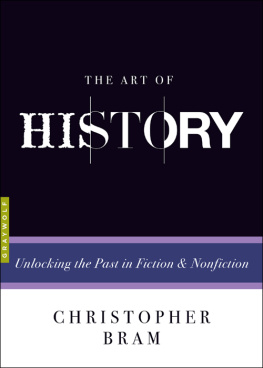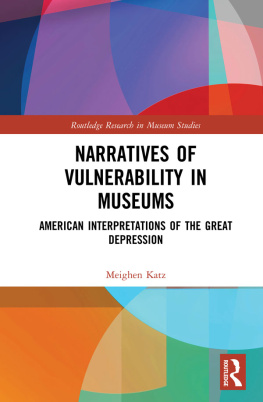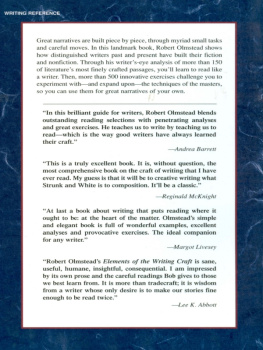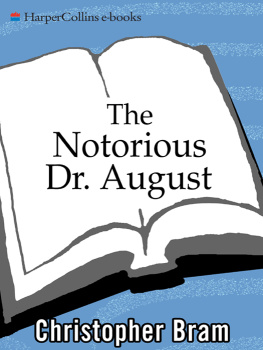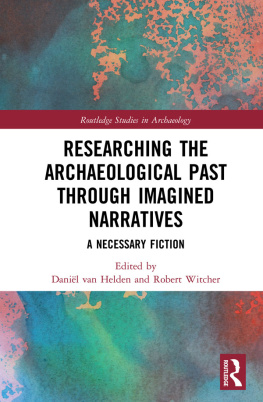The Art of SERIES
EDITED BY CHARLES BAXTER
The Art of series is a line of books reinvigorating the practice of craft and criticism. Each book is a brief, witty, and useful exploration of fiction, nonfiction, or poetry by a writer impassioned by a singular craft issue. The Art of volumes provide a series of sustained examinations of key, but sometimes neglected, aspects of creative writing by some of contemporary literatures finest practitioners.
The Art of Subtext: Beyond Plot by Charles Baxter
The Art of Time in Memoir: Then, Again by Sven Birkerts
The Art of History: Unlocking the Past in Fiction and Nonfiction by Christopher Bram
The Art of Perspective: Who Tells the Story by Christopher Castellani
The Art of Intimacy: The Space Between by Stacey DErasmo
The Art of Description: World into Word by Mark Doty
The Art of the Poetic Line by James Longenbach
The Art of Daring: Risk, Restlessness, Imagination by Carl Phillips
The Art of Attention: A Poets Eye by Donald Revell
The Art of Time in Fiction: As Long as It Takes by Joan Silber
The Art of Syntax: Rhythm of Thought, Rhythm of Song by Ellen Bryant Voigt
The Art of Recklessness: Poetry as Assertive Force and Contradiction by Dean Young
THE ART OF HISTORY
UNLOCKING THE PAST IN
FICTION AND NONFICTION

Also by Christopher Bram
Surprising Myself
Hold Tight
In Memory of Angel Clare
Almost History
Gods and Monsters
Gossip
The Notorious Dr. August
Lives of the Circus Animals
Exiles in America
Mapping the Territory: Selected Nonfiction
Eminent Outlaws
The Art of
HISTORY
UNLOCKING THE PAST IN
FICTION AND NONFICTION
Christopher Bram
Graywolf Press
Copyright 2016 by Christopher Bram
The author and Graywolf Press have provided this e-book to you for your personal use only. You may not make this e-book publicly available in any way. Copyright infringement is against the law. If you believe the copy of this e-book you are reading infringes on the authors copyright, please notify Graywolf Press at: us.macmillanusa.com/piracy.
Ghosts in the Details first appeared in the Yale Review .
Exhibit C: War and Peace first appeared in Commonweal .
This publication is made possible, in part, by the voters of Minnesota through a Minnesota State Arts Board Operating Support grant, thanks to a legislative appropriation from the arts and cultural heritage fund, and through a grant from the Wells Fargo Foundation Minnesota. Significant support has also been provided by Target, the McKnight Foundation, the Amazon Literary Partnership, and other generous contributions from foundations, corporations, and individuals. To these organizations and individuals we offer our heartfelt thanks.

Published by Graywolf Press
250 Third Avenue North, Suite 600
Minneapolis, Minnesota 55401
All rights reserved.
www.graywolfpress.org
Published in the United States of America
ISBN 978-1-55597-743-6
Ebook ISBN 978-1-55597-939-3
2 4 6 8 9 7 5 3 1
First Graywolf Printing, 2016
Library of Congress Control Number: 2015953716
Cover design: Scott Sorenson
In memory of
Barbara Chalmers MacEdwards
THE ART OF HISTORY
UNLOCKING THE PAST IN
FICTION AND NONFICTION
The Nearest Exit May Be Behind You
When I was a sophomore in high school, I had an English teacher named Mrs. Comstock, a handsome, formal, forty-something lady with a stiff neck in a high collar. This was 1968 in Virginia Beach, Virginia, and she was already an anomaly, a throwback to an earlier age. But there was nothing stiff or formal about her love of books or the fearlessness with which she shared ideas with us. She spoke about the lack of tragedy in Gone with the Wind (Scarlett OHara is not heroic), the pain in Kafka (Never read In the Penal Colony while fixing dinner), and the surprise of Theater of the Absurd (when a student asked for the point of a whole literature about meaninglessness, Mrs. Comstock replied, Whats the point of a whole literature about meaning?). She read us Dorothy Parker (Byron and Shelley and Keats / Were a trio of lyrical treats) and Lawrence Ferlinghetti (Christ climbed down / from His bare Tree / this year). Now that Im a teacher myself, Im in awe of both her energy and her willingness to share personal enthusiasms with a room full of sulky, college-bound overachievers. This was superior English. At the time I was delighted just to meet an adult who was so passionate about books.
One day she asked if anyone would like to live in another time beside the present, and, if so, what would it be? I thought this was an excellent question but knew not to jump in too quickly for fear of looking weird. I was an eccentric, goofy kid with a big nose and glasses, a Boy Scout who loved to read. But nobodys hand went up. A few sheepish looks were exchanged, but no one said a word.
Finally I raised my hand. I want to live in the seventeen hundreds.
Mrs. Comstock looked surprised. Oh? Thats one of my favorite periods.
I eagerly explained that I was reading Northwest Passage by Kenneth Roberts, the tale of a young artist who joins Rogerss Rangers during the French and Indian War and travels deep into the wilderness by canoe and foot. It was my idea of heaven.
Mrs. Comstock blinked a few times: this wasnt the eighteenth century she had in mind. (Later I learned that her eighteenth century was more along the lines of Voltaires Age of Reason.) She turned to the rest of the room, however, hoping I had broken the ice. Somebody else? she asked. Nobody? Youre all so happy living in the present?
More silence. Finally someone volunteered that they liked the present fine, thank you, and had no desire to live in a time before, uh, bathrooms. Everyone else nodded in agreement.
I was stunned. I had assumed most people loved the past as much as I did. It explained the shelves and shelves of history books at the library. It supported the popularity of time-machine stories, ranging from those of H. G. Wells to the cartoon adventures of Mr. Peabody and Sherman. But I was more alone than I thought.
Mrs. Comstock smiled at me, sighed sadly, and proceeded with the days lesson.
The truth of the matter is that many peoplemaybe the majoritydont like the past very much. And its not just anxiety about toilet facilities.
There is so much past, for one thing, so much history. It can be overwhelming. And the study of history is notoriously boring, with too many strange names and places and dates. All those different years and centuries are too much like math, and nobody likes math. For some of us the numbers alone are as evocative as colors, not just famous numbers, like 1492 or 1776, but more obscure, magical ones, like 1588 or 1832 or 1914. Yet for many readers these figures can be as forbidding as algebra. And thats not even taking into account ancient times, the BC dates, when time runs backward.
Then there are the people who are not only different from us but dry and serious, brutal and loveless. Jane Austen caught this resistance nicely when a character in Northanger Abbey says, But history, real solemn history I cannot be interested in The quarrels of popes and kings, with wars and pestilences, in every page; the men all so good for nothing, and hardly any women at all.

